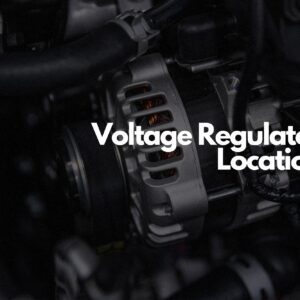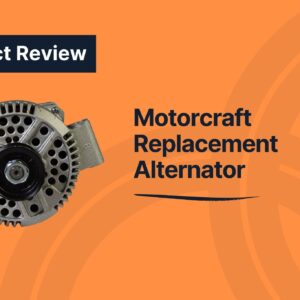A vehicle’s electrical system depends on a constant flow of power to keep its many devices running properly. The alternator serves as its primary source of electricity. Does the alternator also charge the battery? Yes, it does. How does it do this?
A car alternator relies on magnetism to create electricity. Moving a magnetic field past a wire coil creates an electrical current. An alternator has several magnets and coils of wire inside. When the engine spins the alternator, a magnetic field inside will move and pass through wire coils, creating alternating current (AC).
What Does an Alternator Do?
The alternator taps into the engine’s mechanical energy through the serpentine belt and transforms it into electrical energy. This charges the vehicle’s battery and powers devices like the starter motor, headlights, powertrain control module, and other electronics.
The Parts of an Alternator

To better understand how the alternator creates AC, let’s discuss its parts and their roles:
Pulley
The pulley is the component outside the alternator that’s driven by the serpentine belt, which is connected to the engine. With this connection, the alternator draws mechanical energy from the engine.
Rotor
The pulley spins the rotor, which is like a cylindrical spool of wire around a metal core. This spool of wire is the alternator’s electromagnet. Electromagnets produce more powerful magnetic fields than a regular magnet.
Outside the spool of wire are triangular or claw-shaped poles that alter the magnetic field created by the rotor. It alternates the north and south poles in a shape that corresponds to the stator’s arrangement.
Stator
The stator is a stationary part located around the rotor. The stator consists of coil wires. Three total wires wind around the stator in a specific manner that corresponds to the magnetic field made by the rotor. When the rotor spins, these three wires generate AC.
Rectifier
Most electronics need direct current (DC). The rectifier transforms the alternator’s AC into DC using six diodes.
The flow of electricity in an alternating current switches direction at a certain frequency. A diode keeps electricity flowing in only one direction, albeit the flow of electricity fluctuates on and off. A pair of diodes keeps the voltage flow consistent.
Because the stator is composed of three wire coils, the rectifier needs six diodes. The diodes are configured in a way that rectifies both half cycles of the stator’s AC voltage, resulting in a direct current that fluctuates in voltage.
Voltage Regulator
Vehicle electronics require a constant voltage, otherwise you risk damaging the battery and other electronics. A voltage regulator adjusts the rotor’s magnetic field and power output, ensuring they’re smooth and constant.
How Is an Alternator Different from a Generator?
An alternator is similar to a generator in that both produce electricity using a stator and rotor. That said, an alternator can only produce an alternating current, while a generator can produce either AC or DC, making it more versatile.
What’s the Lifespan of an Alternator?
An alternator can last anywhere between 80,000 and 150,000 miles.
A faulty alternator typically causes electrical system symptoms like difficulty starting. The most common components that can cause an alternator to fail include the bearings. The carbon brushes that conduct electricity to the rotor can also wear out. These brushes allow the electricity to reach the rotor, activating the electromagnet.
How to Extend the Alternator’s Lifespan
Alternators are quite reliable and can often last the vehicle’s lifespan. That said, there are ways to maximize their lifespan.
- Maintain the drive belt: Regularly inspect and ensure the drive belt is in good condition and properly tensioned.
- Check electrical connections: Keep battery terminals and alternator connections clean and tight to prevent disruptions.
- Maintain battery health: Regularly test and replace a weak battery to reduce strain on the alternator.
- Minimize electrical load: Avoid excessive use of electrical accessories, especially while idling. This can include charging too many devices or using too many accessories like high-powered speakers and lights.
Any information provided on this Website is for informational purposes only and is not intended to replace consultation with a professional mechanic. The accuracy and timeliness of the information may change from the time of publication.































